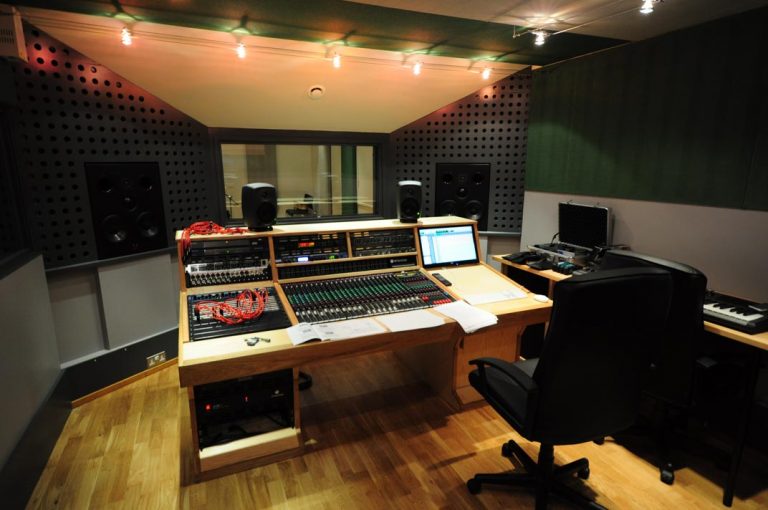


room sound like a large performance area is not going to happen. A tiled bathroom for example has a longer reverb time but still sounds like a tiled bathroom. Nonetheless, usually the size is still detectable to the ear. However reverb times can be extended by adding shape to the boundaries. In regards to size, it is difficult to make rooms sound bigger than they are. The result is a smoother bass response, a large “sweet spot”, and gradual low frequency decay as you move through the room.

Directly in the center of the room on the ceiling is an absorption array. (Please do not assume these are simple boxes stuffed with mineral wool.) The back wall has hard reflective paneling and wood slats. Above the mix position is an 8” absorbent cloud. The front of the room has a six-inch absorbent wall, on top of a rigid mass loaded wall. A simple explanation is a variety of absorbers tuned at the floor to ceiling dimension, which represented the area of greatest modal behavior, with completely different treatments front to back. This required a very sophisticated, complex acoustic design. When the room was analyzed it was predicted that in the center of the room there would be no bass with a large diameter of reduced bass. audiomachine, Composer 1, has poor ratios. It is easier to deal with poor ratios in larger rooms. Alton Everest, Master Handbook of Acoustics. Bolt developed a simple, easy chart for ratio evaluation. There are modal calculators available on the web but they will provide a lot of information that is difficult to understand.

But few people will have the real estate, money and opportunity to build to the inch. Likewise a repeating dimension, L 16’ x W 10’ x H 10’ is not much better.Ī great deal has been written and researched of “golden ratios”. A 10’ x 10’ x 10’ room is an anomaly that no audio person should experience. The ratio of the length to width to height will influence regardless of what you may put into the room. Size of the room is the dominant acoustic feature. Yet each room is a highly specialized creative environment unique in its function. The names and functions of the rooms are Control Room, the technical hub of the recording process, Studio, the performance area and is also used to describe a facility, Booth refers to a smaller performance space.Īll the readers are aware of the common elements these rooms share: line of sight, mechanical systems, isolation, adaptive lighting, connectivity, and so forth. This article will explore the most important design considerations for Recording Studios. Design Considerations for Recording Studios


 0 kommentar(er)
0 kommentar(er)
